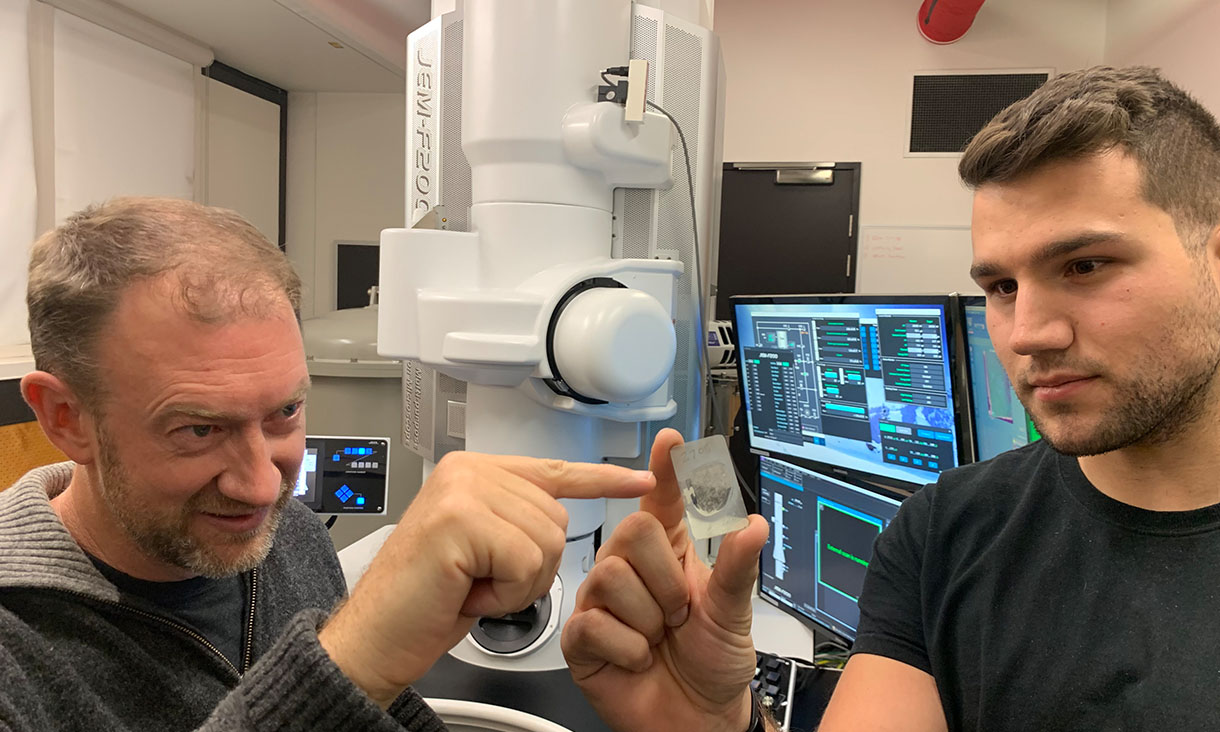In a recent study published in the Proceedings of the National Academy of Sciences, an international team of researchers led by Monash University in Australia have verified the existence of a rare hexagonal structure of diamond called lonsdaleite, within ureilite meteorites from the inside of a dwarf planet that formed approximately 4.5 billion years ago.
Lonsdaleite is named after Dame Kathleen Lonsdale, a famous British pioneering crystallographer responsible for developing several X-ray methods for studying crystal structures, and was the first woman elected as a Fellow to the Royal Society in 1945. This study holds the potential for further unlocking the secrets of the formation of our solar system, and was conducted with collaboration from RMIT University, the Australian Synchrotron and Plymouth University, and CSIRO.
Professor Dougal McCulloch from RMIT, who is the Director of the RMIT Microscopy and Microanalysis Facility, and a co-author on the study, said the researchers predicted the structure of lonsdaleite allegedly makes it harder than regular diamonds.
“This study proves categorically that lonsdaleite exists in nature,” said McCulloch. “We have also discovered the largest lonsdaleite crystals known to date that are up to a micron in size – much, much thinner than a human hair.”
The research team says lonsdaleite’s uncommon structure could assist in developing new manufacturing methods for ultra-hard materials for mining.
For the study, the research team studied snapshot slices of the meteorites containing lonsdaleite and regular diamonds to see how each formed.
“There’s strong evidence that there’s a newly discovered formation process for the lonsdaleite and regular diamond, which is like a supercritical chemical vapor deposition process that has taken place in these space rocks, probably in the dwarf planet shortly after a catastrophic collision,” said McCulloch. “Chemical vapor deposition is one of the ways that people make diamonds in the lab, essentially by growing them in a specialized chamber.”
Professor Andy Tomkins of Monash University, and lead author of the study, said the researchers propose the meteorites containing lonsdaleite formed form what’s known as a supercritical fluid at both moderate pressures and high temperatures, which resulted in near perfect preservation of the textures and shape of the pre-existing graphite.
“Later, lonsdaleite was partially replaced by diamond as the environment cooled and the pressure decreased,” said Tomkins, who is also an ARC Future Fellow at Monash University’s School of Earth, Atmosphere and Environment. “Nature has thus provided us with a process to try and replicate in industry. We think that lonsdaleite could be used to make tiny, ultra-hard machine parts if we can develop an industrial process that promotes replacement of pre-shaped graphite parts by lonsdaleite.”
Tomkins said the study’s results assist in addressing a long-established enigma concerning the development of carbon phases within ureilites.
As always, keep doing science & keep looking up!
Featured Image: Monash University Professor Andy Tomkins (left) and RMIT PhD scholar Alan Salek showing off a sample of a ureilite meteorite at the RMIT Microscopy and Microanalysis Facility. (Credit: RMIT University)

